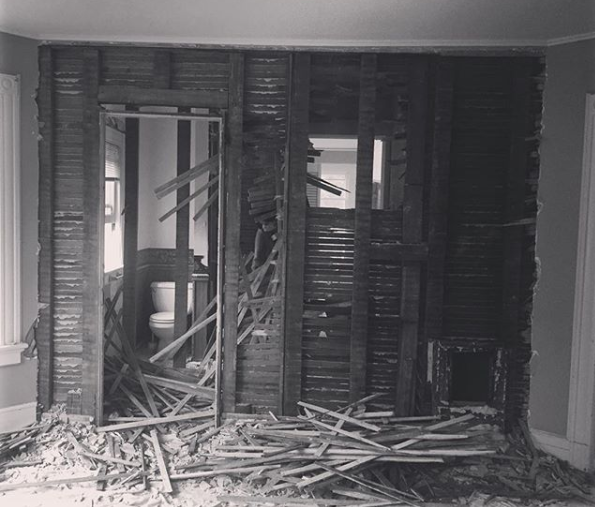Practicing Sustainability in Design
One of the first courses I took for my Interior Design degree, was a course on sustainable designs, and all the ways you can incorporate sustainability into your practice. This class was actually such an eye-opener for me that I temporarily shifted my major over to Environmental Science-but that’s a story for another day. My biggest takeaway, is just how wasteful this industry can be, and it doesn’t have to be!!
Demo Day at project 1893
From knock-down, drag-out demo days, seeing everything filling a dumpster; to single use, mass produced tchotchkes that are made to be used for a short period of time and then disposed of, a lot of our industry has a short and fast life cycle that results in dumpsters and landfills.
But it doesn’t all have to be thrown out. When we are working on a renovation, we can take stock of any pieces that we may be able to reuse either in a different room or even in the same room, and note any pieces we may want to altered with reupholstery, paint, etc., to transform their look, and then use again.
A repurposed sewing table, being used as additional storage in this family condo, and a salvaged butterfly chair frame with new cover create a cozy reading nook.
The other thing we can do to cut down on reno waste is to look over what can be salvaged prior to demo. Anything that isn’t going to be kept for the new space, but is still in decent condition can often be removed delicately to be either consigned or donated to a salvage yard, Habitat for Humanity ReUse Store, or similar in your area. This can be anything from old cabinetry, to tile, to doors! This is often just a conversation to have with your contractor. Let them know you want to salvage what you can and point out pieces in particular that you want to save to be removed with caution and stored for transport to the donation facility of your choice.
A salvaged cast iron sink, getting refinished to add a playful element and bold color to this kids bath.
After demo, I like to consider these questions when selecting materials to ensure I’m making wise choices:
Where is it made? Will it have a large impact getting from the manufacturer to us?
How is it made? Is it made using materials and practices that will stand the test of time?
How’s the customer service? If something should happen down the road, will there be someone on the manufacturers side who can help us get the right parts and pieces to get it back to work? (This is particularly important with plumbing and appliances.)
What is the manufacturer’s stance on the environment? Do they have a sustainability policy in place?
This upcycled kitchen uses a combination of all things sustainable, from updating the existing cabinetry, and salvaging the grill in the island, to bringing in high quality plumbing and tiles made from recycled materials.
It’s really important to me to make sure all of these things are kept in mind, and then to execute our design by selecting pieces that will stand the test of time in your home and with your lifestyle. With better quality materials and pieces made to last, we can create a wonderful space in your home and do so with a clear conscious.





